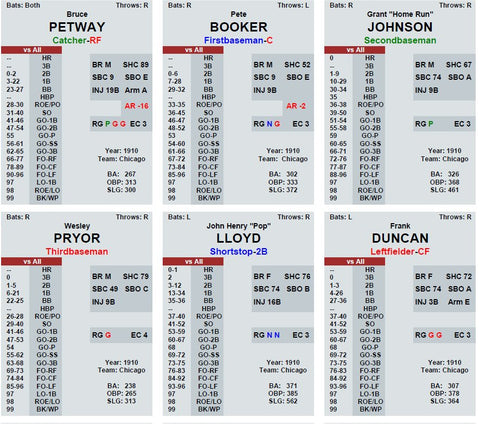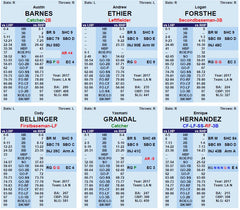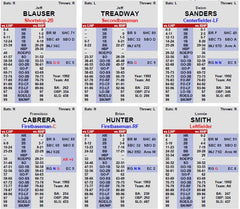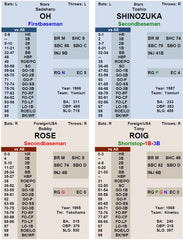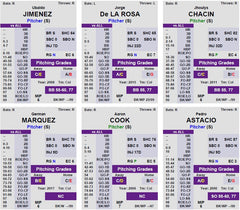Life is Sport Games
PDF of Negro League Great Teams for PINE TAR Baseball - electronic transfer
Kurt Bergland and myself are pleased to introduce the Negro Leagues Great Teams Set for the Pine Tar Baseball game. This set features the best teams (subjective of course) from the Negro Leagues. The set comes in PDF format.
Files will come with a password that will be given upon delivery. The set includes 12 teams with an average roster size of about 15 players. Each Sheet contains up to 9 players.
There are teams from There are teams from 1910, 1917, 1924, 1925, 1928, 1929, 1931, 1933, 1935, 1942, 1946, and 1947. Teams were selected based primarily upon the endorsement of Negro Leagues historians and also the availability of more complete statistics and box scores. While the search for more box scores is ongoing, of course, we believe that these twelve teams are twelve of the fifteen or so finest teams in Negro Leagues history. These are the heavy hitters.
One more word about statistics. It became fashionable, indeed axiomatic, over the latter decades of the 20th century to say that due to the lack of statistics, we really don’t have much knowledge of the Negro Leagues except what the players, writers, and fans have told us. Thanks to the wonderful work of the people who make important contributions to resources like Seamheads.com, and others, we must emphatically state that is no longer the case. There is wonderful, and complete data about the Negro Leagues, and it is improving steadily. We know a great deal about the players, the teams, and the way the game was played.
As you enjoy the cards in this set, whether for tournaments, seasons, or solitary games, it is important to remember that Negro Leagues baseball was unique. The first thing that you may notice is that the roster sizes tended to be smaller than their Major League counterparts. This was simply due to the fact that owners operated on smaller budgets. Therefore, it would not be uncommon to see teams in the leagues during these years with rosters of 14 to 17 players. Many players—indeed, many in this set—were two-way players, meaning that they primarily were position players, but also occasionally pitched. Alternatively, they may have primarily been pitchers, but did play as position players from time to time. It will be helpful, therefore, for you to carefully review the cards so that you get a sense of how the players on each team were used. Also, please note that if a pitcher was used frequently as a pinch hitter, we have indicated that on his card as well.
We mentioned earlier in this document that the years 1910 to 1947 are covered in this set. Just as in the Major Leagues, the Negro Leagues had a deadball period that ended around 1920, and the game gradually changed to become more like what we would recognize today in the years that followed. However, unlike the Major Leagues, some elements of the deadball period remained common practice e in the Negro Leagues. You will see this reflected in the cards in this set. Speed was a priority for all of these teams, and “first run strategies” such as stealing, the hit and run, bunting, and certainly taking the extra base were cornerstones of Negro Leagues offenses. This was true even for teams like the St. Louis Stars, who played in cozy, home run friendly ballparks.
With most teams carrying, at most, six men who pitched during this time period, the use of relief pitching was very different than we see today. Complete games were the expectation, and staff “aces” on great teams such as these delivered them often. Further, when they weren’t starting games, they were expected to be ready to relieve a starter who might not be doing well on that particular day. Sometimes these relief appearances would span many innings.
The Negro Leagues schedule was one that accommodated using pitchers in this way. League games were often clustered around weekends, with weekdays used for travel and/or exhibition games. Doubleheaders on weekends were common. So, as you look at the teams in the set, pitching “rotations” of three, and sometimes even two, pitchers were commonplace.
Note: When you place your order for this PDF, I believe the cart requires you to fill in your address info even though I will send your file via email. My apologies but the check out system has no way of turning the address requirement off.

